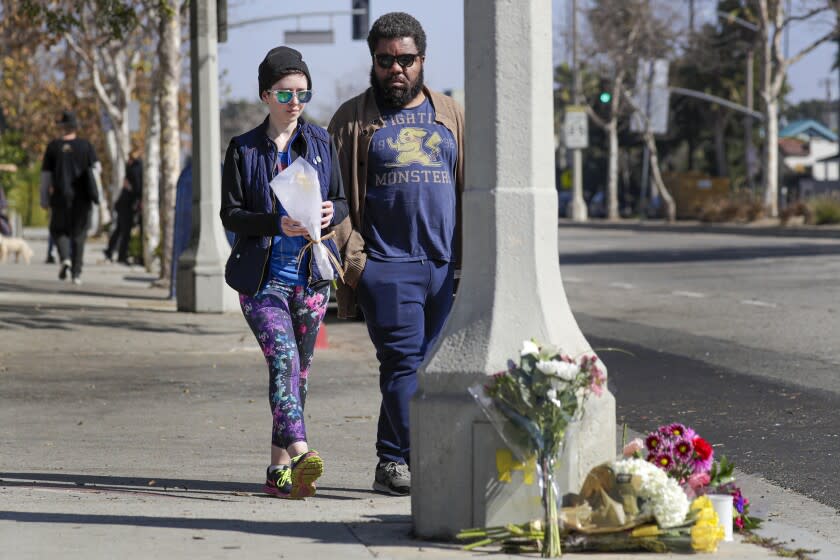Editorial: Yes, deadly streets are a national crisis. But we can fix them

Calling the rising number of traffic deaths in the United States a preventable crisis, Transportation Secretary Pete Buttigieg announced last week a new national strategy to make the streets safer and save lives.
The premise of the plan is simple: Humans make mistakes, so the entire transportation system, from road engineering to vehicle design, needs to be designed to avoid crashes and to reduce the likelihood of serious injury and death when crashes occur. That’s a profound shift from the traditional approach that has prioritized fast, free-flowing roads and put the onus on people to prevent deadly crashes.
The increase in traffic fatalities should make it clear that the current system is not working. In 2020, even as Americans were driving less at the beginning of the pandemic, traffic deaths nationwide increased to more than 38,000, which was 2,500 more fatalities than in 2019. And the data for 2021 are even worse; in the first six months of the year, traffic deaths increased 18% over the same period in 2020. Moreover, traffic fatalities are higher in low-income communities of color and rural areas, as well as among the disabled and the elderly.
“It’s as if we were living through a war,” Buttigieg said. “We cannot accept that these fatalities are somehow an inevitable part of life in America.”
And yet, Americans have accepted this. Transportation planning and engineering, as well as public expectations, have been almost entirely focused on drivers’ convenience. Improvements to other modes of transportation, including walking and biking, are treated as afterthoughts or niche projects; there hasn’t been enough funding or political will to ensure streets are designed to safely accommodate all road users.
The new transportation strategy calls for updating federal road design regulations to make streets safer for users, changing how speed limits are set (California lawmakers did that last year), promoting the use of speed cameras and prodding communities to build “Complete Streets” that make safe space for walkers, cyclists and transit users. The federal government included $6 billion in last year's infrastructure law for projects to reduce traffic fatalities, which is a welcome infusion of money, although safety spending is still a pittance compared with money dedicated to highway and bridge construction.
The agency is also looking at making vehicles safer. Americans have been buying more SUVs and trucks, which are more likely to seriously injure or kill a pedestrian in a collision. The Department of Transportation will consider requiring new vehicles to include automatic brake technology to avoid hitting a person or another vehicle. Federal regulators should also be pushing automakers to design vehicles that are safer not just for the driver but for the people around the vehicle.
Ultimately, Buttigieg said, the long-term goal of the strategy is to eliminate traffic fatalities.
In Los Angeles, this idea of eliminating traffic deaths — dubbed Vision Zero — has become a punchline and a letdown. In 2015, Mayor Eric Garcetti launched his own plan to reduce traffic deaths to zero by 2025. It was an important and ambitious goal, but the program never had the political backing or funding to succeed and traffic deaths have increased.
California lawmakers have also been reluctant to pass laws designed to slow traffic and make streets safer. It took Assembly member Laura Friedman (D-Glendale) several years to persuade her colleagues to allow cities to lower the speed limit by 5 mph on high-risk streets. Bills to test using cameras for speed enforcement have failed to gain support.
Ideally, the Transportation Department's promise of funding and policies that prioritize safety will give local and state leaders the nudge they need to take real steps to make streets safer. The Biden administration has rightly recognized that its climate goals are linked to street safety. We can’t expect more people to forgo cars in favor of walking, biking and taking public transit (which often requires walking or biking at the beginning and end of the trip) if they don’t feel safe.
Yes, deadly streets are a national crisis. But it's eminently fixable, though it will take a commitment to design and fund safer roads and safer vehicles.
This story originally appeared in Los Angeles Times.

